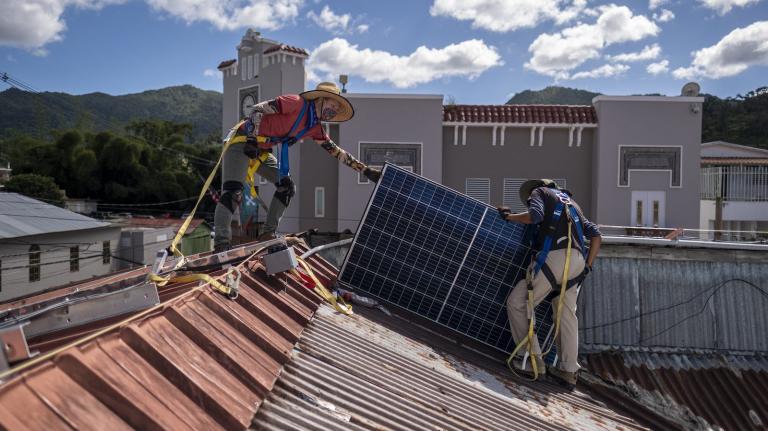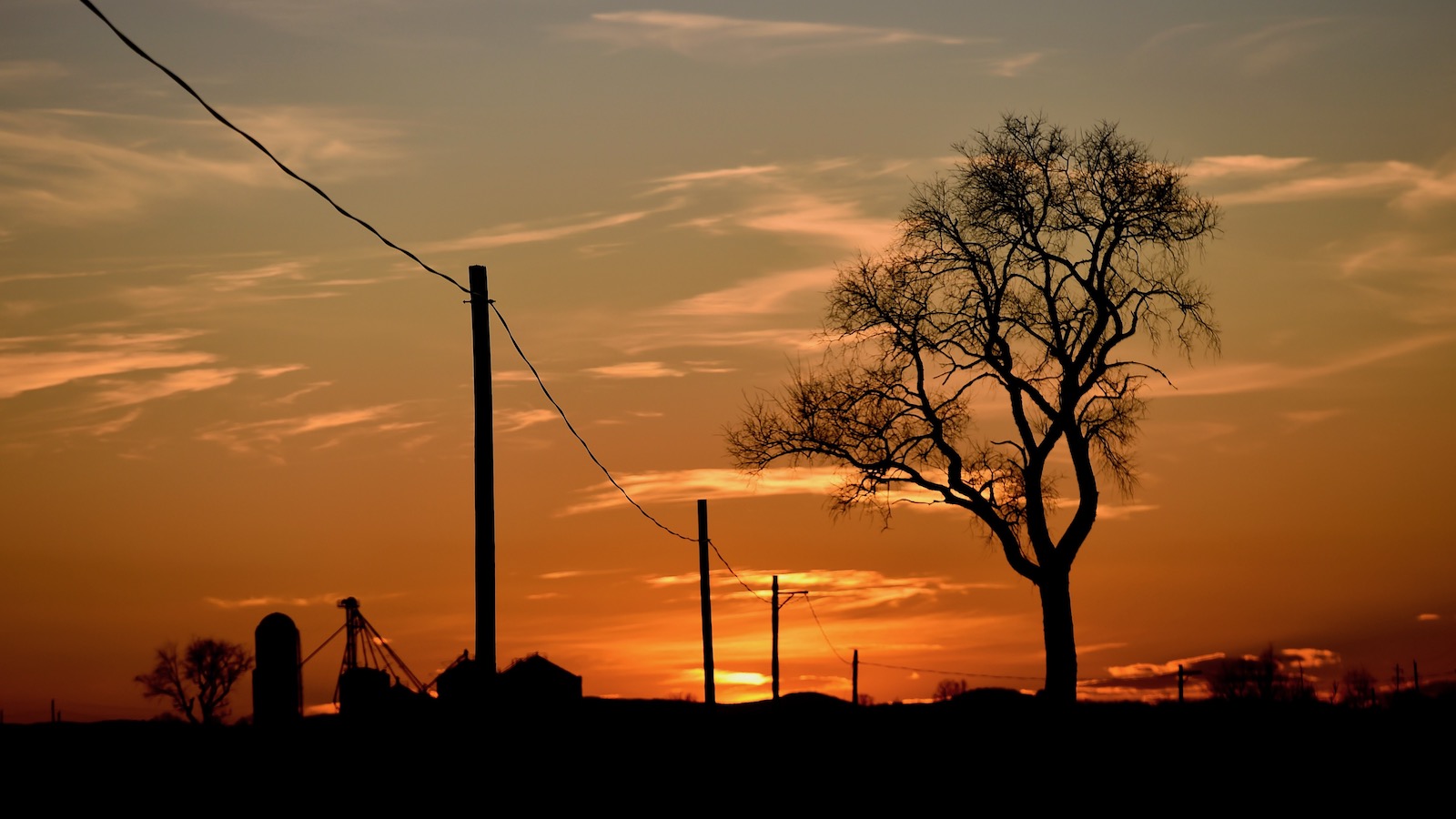One-sixth of U.S households are in rural communities, where people often pay a larger share of their income for electricity. Reliability can be spotty, and investment in decarbonization scant. Geographically scattered towns and aging infrastructure can make maintaining the grid expensive. Even simple steps to improve energy efficiency, like insulating an attic, can be out of reach for cash-poor residents, especially renters.
The Department of Energy hopes to address these longstanding challenges by dedicating $315 million toward a sweeping effort to help rural and tribal communities nationwide modernize their electrical grids, invest in renewables, and help residents increase the energy efficiency of their homes.
The initiative, announced last week, is part of the Energy Improvements in Remote and Rural Areas program. The funding is part of a broader effort to allocate more than $1 billion over the next five years to support energy projects in communities of less than 10,000 people. The goal is to promote climate resilience and address rural energy cost burden — defined as the percentage of a household’s income allocated toward energy bills each month — through “replicable energy projects that lower energy costs, improve energy access/resilience, and/or reduce environmental harm.”
“There isn’t one ideal project — we’re casting a wide net,” a senior Energy Department official told Grist. “[Rural] communities are not one-size-fits-all.”
Applications for the funds are due in June, and must include a “community benefits plan” outlining how the project will ensure worker safety, fair wages, and diversity in hiring.
Advocates for rural and tribal communities say the funding does more than facilitate the green energy transition — it facilitates safe, affordable housing. According to a 2018 study by the American Council for an Energy-Efficient Economy, rural households experience a higher energy cost burden than urban households. About a quarter of them occupy poorly insulated mobile homes. Electricity disconnects are high, and storms can knock out power for days. According to the study, even simple household improvements would save the average resident hundreds of dollars every year. Another study found that renewable energy costs consumers less than coal, with 99 percent of coal-fired generation plants costing more to run than wind and solar facilities.
Small utilities and advocates for energy equity say federal investment is sorely needed, particularly in cash-poor, rural areas. Some communities already have pioneered exactly the types of projects encouraged by the federal program announced last week, and hope to secure the funds to launch more.
The Ouachita Electric Cooperative in Arkansas is part of the country’s sprawling rural electric co-op system in which ratepayers are both members and owners of their utility and play a role in decision-making. Based in the small town of Camden, 100 miles south of Little Rock, Ouachita Electric recently embraced renewable energy to better serve its members, who often struggle to make ends meet.
“Our median income is $31,000 — blue-collar factory workers,” said co-op membership manager Leslie Holloway. Some members face an energy burden 30 percent above the national average, she said. Many lack the capital to invest in their homes, most of which are over 30 years old and in dire need of upgrades. Although loans for energy-efficiency upgrades are available to homeowners, they’re often out of reach for rural, working-class renters. To address that, Ouachita secured an $8 million federal grant to kickstart an energy savings program and build a solar array. It used the funding to help improve members’ homes with duct sealing, insulation, and other energy-saving upgrades. Ultimately, the program allowed the cooperative to reduce rates 3.4 percent and saved Ouachita Electric enough money to recoup almost all of its investment.
Rural utilities and power companies that are working toward a green transition say half the work lies in overcoming decades of economic disadvantage and disinvestment. Brett Isaac, the founder and executive chairman of public benefit renewable energy corporation Navajo Power, said public assistance in funding the energy transition is essential for communities that have long been left behind.
“The investment from the various different opportunities under the Biden administration, from infrastructure to the Inflation Reduction Act … these are all monumental, because they’re actually putting quantifiable investments into certain areas that have never really experienced them,” said Isaac, a 2022 Grist 50 honoree. “We don’t have the institutions that created our economies, like we’re not in control of those things.”
Since its beginning, uranium, coal, and other minerals have been mined on Navajo territory, but nevertheless left most of the people living there in poverty. That era may be passing. The Navajo Generating Station, formerly the largest coal-fired power plant in the country, powered down in 2019, leaving its massive service area in need of both new jobs and new energy resources. Almost 30 percent of the reservation’s homes still don’t have electricity. But Navajo Power is currently in phase one of a plan to build utility-scale solar projects on tribal land and install panels on residents’ homes.
In Kentucky, Chris Woolery, a residential energy coordinator with the Mountain Association, can’t wait to help rural power companies and electric cooperatives access the federal funding. Advocates throughout the state have been laying the groundwork for a renewable transition for many years. The Mountain Association, for example, provides loans for small solar projects and works with other groups to push for state policies friendlier to small-scale solar development. “What we are saying is, we know that we have the tools to address our problems. We pioneered them ourselves,” Woolery said.
A big barrier, he said, could be legislative — for instance, state lawmakers are trying to pass a bill banning utilities from accepting federal funds to shut down coal plants. Meanwhile, the outdated grid in central Kentucky left thousands without power for days after a windstorm last month. Woolery said energy efficiency and distributed renewables could increase grid resiliency during extreme weather — a necessity in remote communities where roads can be damaged and emergency services can be hours away. Ultimately, he said, providing energy equity and reliability is a matter of not just savings, but survival — a promise that no one should ever have to choose between their energy bill and their next meal.
“We’re working towards a vision in which access to energy is just a human right,” Woolery said.




